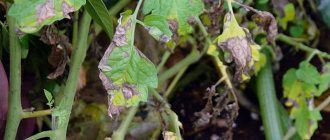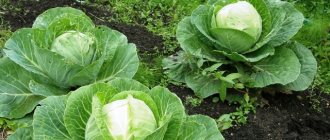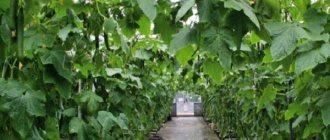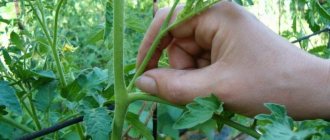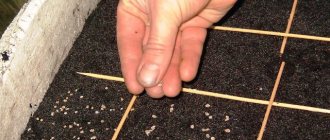Slugs
They feed on both leaves and fruits of peppers. At the site of their meal, characteristic ugly-shaped holes in the foliage remain. Slugs become active in the evening and at night, in the absence of the harmful light of the sun and heat, as well as the birds and animals that feed on them.
The following measures can be taken against slugs:
- Do not overdo it with watering the plants, since the favorite habitat of slugs is moist soil;
- it is imperative to carefully weed the areas and remove silage from the area, since slugs like to hide in it while waiting out the heat;
- A mixture of tobacco and lime works well to protect peppers from slugs, if you sprinkle them on the soil - they don’t like this cocktail;
- mustard or ground pepper in the soil has the same effect, you can also use coffee grounds;
- slugs do not like the smell of parsley, you can plant it in the rows or between the rows.
Colorado beetle
It harms the entire nightshade family, mainly affecting potatoes, but it does not disdain peppers. Colorado beetles eat everything - stems, flowers, fruits, foliage. By the way, if there are potatoes and eggplants on the site, the beetle will first eat them, and then move on to the pepper.
Read here - Spider mites on strawberries: methods and ways to get rid of the pest. 110 photos and video instructions on how to process strawberries
The parasite is characterized by a high degree of adaptation to existing chemical plant protection products, which do not give a 100% result. Therefore, pest control will primarily have to be done manually, collecting beetles and their eggs located on the inside of the foliage from the foliage and stems.
A good folk remedy for combating the Colorado potato beetle is an infusion of celandine, which is used to treat peppers. Pests also do not like the smell of beans.
Pepper varieties
For the successful cultivation of pepper, the correct selection of the variety plays an important role, on which not only the yield itself depends, but also the ripening time, frost resistance, taste and susceptibility of the vegetable to diseases and pests. Knowledge and correct selection of varieties will simplify the growing process.
Pepper has more than two thousand varieties, which I would divide into several categories:
- Sweet pepper varieties
- Hot pepper varieties
- Pepper hybrids
- Pepper varieties for balconies and window sills
Sweet pepper varieties include: Ivanhoe, Agapovsky, Accord, Alyonushka, Atomor, Bagration, Belladonna, Snow White, Turquoise, Buratino, Vernost, Victoria, Denis, Dobryak, Eroshka, Yellow Bell, Zarya, Isabella, Prometheus, Florida and many others.
The top ten varieties of hot peppers are headed by: Adjika, Indian Summer, Hungarian Yellow, Magic Bouquet, Gorgon, For Mother-in-Law, Coral, Red Fatty, Fiery Maiden, Ogonyok.
Pepper hybrids are popular because they are resistant to diseases, pests and are not afraid of temperature changes. Common types are: Adler, Ararat, Erivan, Kazbek Terek.
Balcony and indoor varieties include Watercolor, Candy, Chanterelle, Treasure Island, Tomboy, Yarik. These types of peppers are stunted and the fruits are small. One advantage is that peppers can be grown in small containers in an apartment or on a balcony.
Aphid
It feeds on both seedlings and adult plants. Covers the pepper completely - stems, foliage, flowers and fruits. Aphids extract nutrients from peppers, resulting in the development of defective fruits, and the foliage first curls and then may die completely.
Favorable conditions for aphids are an air temperature of 23-27 degrees and high humidity. If you ignore the threat, aphids will stick to all the plants and can lead to their death.
Fight the pest as follows:
- water infusion of fine tobacco or yarrow mixed with laundry soap - spray the whole pepper;
- when watering, use nettle infusion, left for 24 hours;
- if there are still a few aphids, wash them off the plants with a soap or manganese solution;
- the use of store-bought chemicals - it is advisable to use them before the fruits begin to set.
What and when to treat
Treatment of plantings with a protective agent begins after determining the type of pest. Various methods are used to control insects.
Biological drugs
Biological products are a gentle method of control. Their action is based on bacteria and fungi that are active against certain viruses. You can treat peppers against pests using the following biological means:
- Boverin;
- Actinin;
- Bitoxacibillin;
- Nematophagin;
- Lepidocide.
Unfortunately, drugs in this group have a slow effect and are often useless for combating massive colonies of insects. They are more often used to treat diseases carried by insects.
Chemicals (insecticides)
Chemicals are effective against many pests. You can treat pepper seedlings against pests with the following chemicals:
- Storm;
- Bicol;
- Arrivo;
- Aktara;
- Meta;
- Nurel;
- Fitoverm.
Fitoverm and other drugs must be diluted following the instructions.
Attention!
Insecticides are extremely dangerous and toxic. They should be used carefully, strictly following the instructions for use. Work in protective equipment: gloves, respirator, goggles.
Pharmacy products
Products from pharmacies are increasingly used to spray pepper bushes. Solutions prepared at home using pharmaceutical products are safe for seedlings, humans and animals. To combat pests, they resort to help:
- potassium permanganate - 30 g of potassium permanganate, 0.5 kg of wood ash, 10 l of warm water;
- iodine – take 5 drops of iodine per 5 liters of water;
- laundry or tar soap - 5 liters of warm water will require 80 g of grated soap;
- boric acid - stir 2 g of the product in 10 liters of water.
Spider mite
Lives on the inside of leaves. You can notice them by the characteristic thin cobweb that envelops the plant. If the web was not noticeable, secondary signs may soon appear - characteristic dots on the foliage, which are the result of mite larvae devouring the plant.
As a result, the foliage changes color, withers and falls, and the fruits are also affected. The parasite is activated in dry, hot weather. Control methods can include chemicals that are effective against aphids, the biological compositions Fitoverm and Iscarbio, as well as the natural enemy of the spider mite, the phytosailus beetle. The soil is treated with lime mortar, which repels the parasite.
Thrips
The insect is brown in color and is a pest of grass crops. Light yellow spots appear on the foliage during their activity. It overwinters in silage and weeds, so the area should be carefully weeded.
If thrips are found on the site, there is no need to put off fighting them until later. Drugs like Fitoverm or Akarin are effective against the pest; peppers are treated with an aqueous solution in the indicated dosages.
Whitefly
An extremely common, prolific pest that attacks young plants. Lays eggs on the inside of leaves.
If the number of parasites is small, the technique of simply washing them off the foliage with water, paying special attention to the inside of the leaves, can help. If there is a significant accumulation of the pest, treatment is carried out with Intravir.
The soil is freed from weeds and silage; it is recommended to treat it with karbofos in the greenhouse. The natural enemy of the whitefly is encarsia, which feeds on it and parasitizes on it.
Gooseberry pests - 110 photos and videos, description, names, treatment, prevention. Features of care and cultivation of gooseberries
Raspberry chlorosis: description of the disease, treatment methods, disease prevention (145 photos + video)
- Why do gooseberry berries turn white: the reasons for the appearance of a white coating. Diseases and pests of gooseberries (105 photos)
The listed list of pests is not complete; the most common and annoying to the gardener were named. To prevent pest damage to peppers, it is recommended to treat them with both folk and store-bought chemicals.
Main signs of pests
Pests of bell peppers in a greenhouse quite often appear due to improper care of the plant or lack of preventative measures to protect them. The following signs indicate that pepper seedling pests have appeared:
- pepper leaves gradually begin to change color and fade;
- infected greenhouse peppers grow more slowly;
- during wilting, not only the leaves of the bushes may suffer, but also their ovaries with peduncles;
- poor yield;
- Small pest larvae appear on the leaves, which can be seen with the naked eye.
When the first signs of the presence of pests appear on the bushes, it is necessary to immediately figure out which plant parasite attacked the plant.
